
Roger William Corman was an American film director, producer, and actor. Known under various monikers such as "The Pope of Pop Cinema", "The Spiritual Godfather of the New Hollywood", and "The King of Cult", he was known as a trailblazer in the world of independent film.

Millie Perkins is an American retired film, television actress and model known for her debut film role as Anne Frank in The Diary of Anne Frank (1959), and for her supporting actress roles in two 1966 Westerns, The Shooting and Ride in the Whirlwind, both directed by Monte Hellman.

The Missouri Breaks is a 1976 American Western film starring Marlon Brando and Jack Nicholson. The film was directed by Arthur Penn, with supporting performances by Randy Quaid, Harry Dean Stanton, Frederic Forrest, John McLiam, and Kathleen Lloyd in her film debut. The score was composed by John Williams.

The Shooting is a 1966 American Western film directed by Monte Hellman, with a screenplay by Carole Eastman. It stars Warren Oates, Millie Perkins, Will Hutchins, and Jack Nicholson, and was produced by Nicholson and Hellman. The story is about two men who are hired by a mysterious woman to accompany her to a town located many miles across the desert. During their journey, they are closely tracked by a black-clad gunslinger, who seems intent on killing all of them.
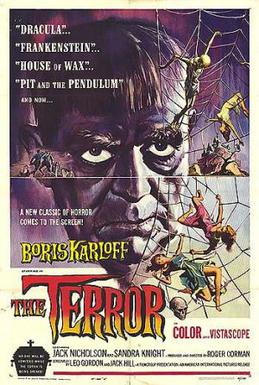
The Terror is a 1963 American independent horror film produced and directed by Roger Corman. The film stars Boris Karloff and Jack Nicholson, the latter of whom portrays a French officer who is seduced by a woman who is also a shapeshifting devil.

Bandolero! is a 1968 American Western film directed by Andrew V. McLaglen and starring James Stewart, Dean Martin, Raquel Welch and George Kennedy. The story centers on two brothers on the run from a posse, led by a local sheriff who wants to arrest the runaways and free a hostage that they took along the way. They head into the wrong territory, which is controlled by "Bandoleros".
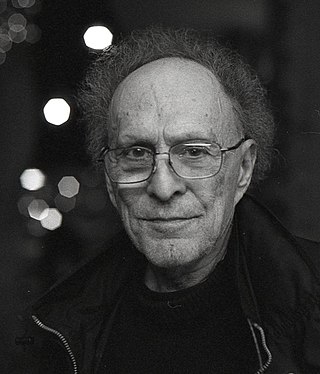
Monte Hellman was an American film director, producer, writer, and editor. Hellman began his career as an editor's apprentice at ABC TV, and made his directorial debut with the horror film Beast from Haunted Cave (1959), produced by Gene Corman, Roger Corman's brother.
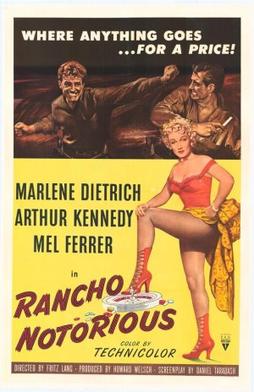
Rancho Notorious is a 1952 American Western film directed by Fritz Lang and starring Marlene Dietrich as the matron of a criminal hideout called Chuck-a-Luck, named after the game of chance referenced in the film. Arthur Kennedy and Mel Ferrer play rivals for her attention in this tale of frontier revenge.

Western Union is a 1941 American Western film directed by Fritz Lang and starring Robert Young, Randolph Scott, and Dean Jagger. Filmed in Technicolor on location in Arizona and Utah. In Western Union, Scott plays a reformed outlaw who tries to make good by joining the team building a telegraph line across the Great Plains in 1861. Conflicts arise between the man and his former gang, as well as between the team stringing the wires and the Native Americans through whose land the new lines must run. In this regard, the film is not historically accurate; Edward Creighton was known for his honest and humane treatment of the tribes along the right of way and this was rewarded on the part of the Indians by their trust and cooperation with Creighton and his workers. The installation of telegraph wires was met with protest from no one.

Beast from Haunted Cave is a 1959 horror/heist film directed by Monte Hellman and starring Michael Forest, Frank Wolff and Richard Sinatra. It was produced by Gene Corman, Roger Corman's brother. Filmed in South Dakota at the same time as Ski Troop Attack, it tells the story of bank robbers fleeing in the snow who run afoul of a giant spider-like monster that feeds on humans. The film was released as a double feature with The Wasp Woman (1959).
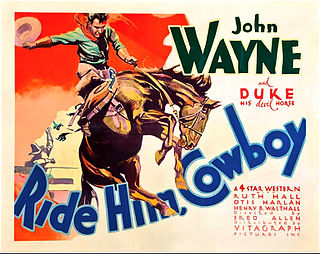
Ride Him, Cowboy is a 1932 pre-Code Western film directed by Fred Allen for Warner Brothers, starring a 25-year-old John Wayne. Based on the 1923 novel of the same name by Kenneth Perkins, the film is a remake of The Unknown Cavalier, a 1926 silent Western starring Ken Maynard, with much stock footage from the original. The film was released as The Hawk in the U.K.
The outlaw biker film is a film genre that portrays its characters as motorcycle riding rebels. The characters are usually members of an outlaw motorcycle club.

Acid Western is a subgenre of the Western film that emerged in the 1960s and 1970s that combines the metaphorical ambitions of critically acclaimed Westerns, such as Shane and The Searchers, with the excesses of the Spaghetti Westerns and the outlook of the counterculture of the 1960s, as well as the increase in illicit drug taking of, for example, cannabis and LSD. Acid Westerns subvert many of the conventions of earlier Westerns to "conjure up a crazed version of autodestructive white America at its most solipsistic, hankering after its own lost origins".
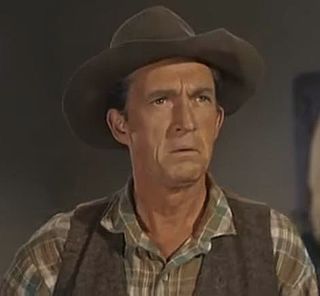
George Mitchell was an American actor who performed from 1935 through 1971 in film, television, and on Broadway.

Posse from Hell is a 1961 American Western film directed by Herbert Coleman and starring Audie Murphy and John Saxon.
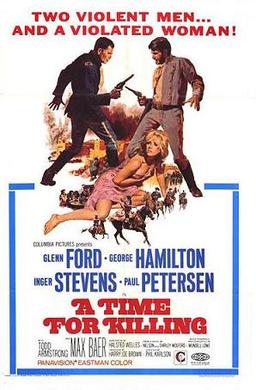
A Time for Killing is a 1967 Western film directed originally by Roger Corman but finished by Phil Karlson. Filmed in Panavision and Pathécolor, it stars Glenn Ford, George Hamilton, Inger Stevens, and Harrison Ford in his first credited film role.

The Desperadoes is a 1943 American Western film directed by Charles Vidor and starring Randolph Scott, Claire Trevor, Glenn Ford, Evelyn Keyes and Edgar Buchanan. Based on a story by Max Brand, the film is about a wanted outlaw who arrives in town to rob a bank that has already been held up. His past and his friendship with the sheriff land them both in trouble. The Desperadoes was the first Columbia Pictures production to be released in Technicolor.
Gunpoint is a 1966 American Western film directed by Earl Bellamy and starring Audie Murphy. It was Murphy's final film for Universal Pictures.
The Filmgroup was a production and distribution company founded by filmmakers Roger Corman and Gene Corman in 1959. Corman used it to make and distribute his own movies, as opposed to ones he was making for American International Pictures. The company ultimately folded, however, lessons from running the company helped Corman make a success later of New World Pictures. Filmgroup also produced early feature work of Francis Ford Coppola, Peter Bogdanovich, Charles B. Griffith, Curtis Harrington, Jack Hill, Monte Hellman, Robert Towne and Jack Nicholson.

Gary Kent was an American film director, actor, and stuntman notable for his appearances in various independent, grindhouse, and exploitation films. A native of Washington, Kent studied at the University of Washington before later embarking on a film career. He made his feature film debut in Battle Flame (1959) and had roles in several additional low-budget films in the 1960s, including The Black Klansman (1966) and the biker film The Savage Seven (1968). He also served as a stunt double for Bruce Dern in Psych-Out (1969).

















